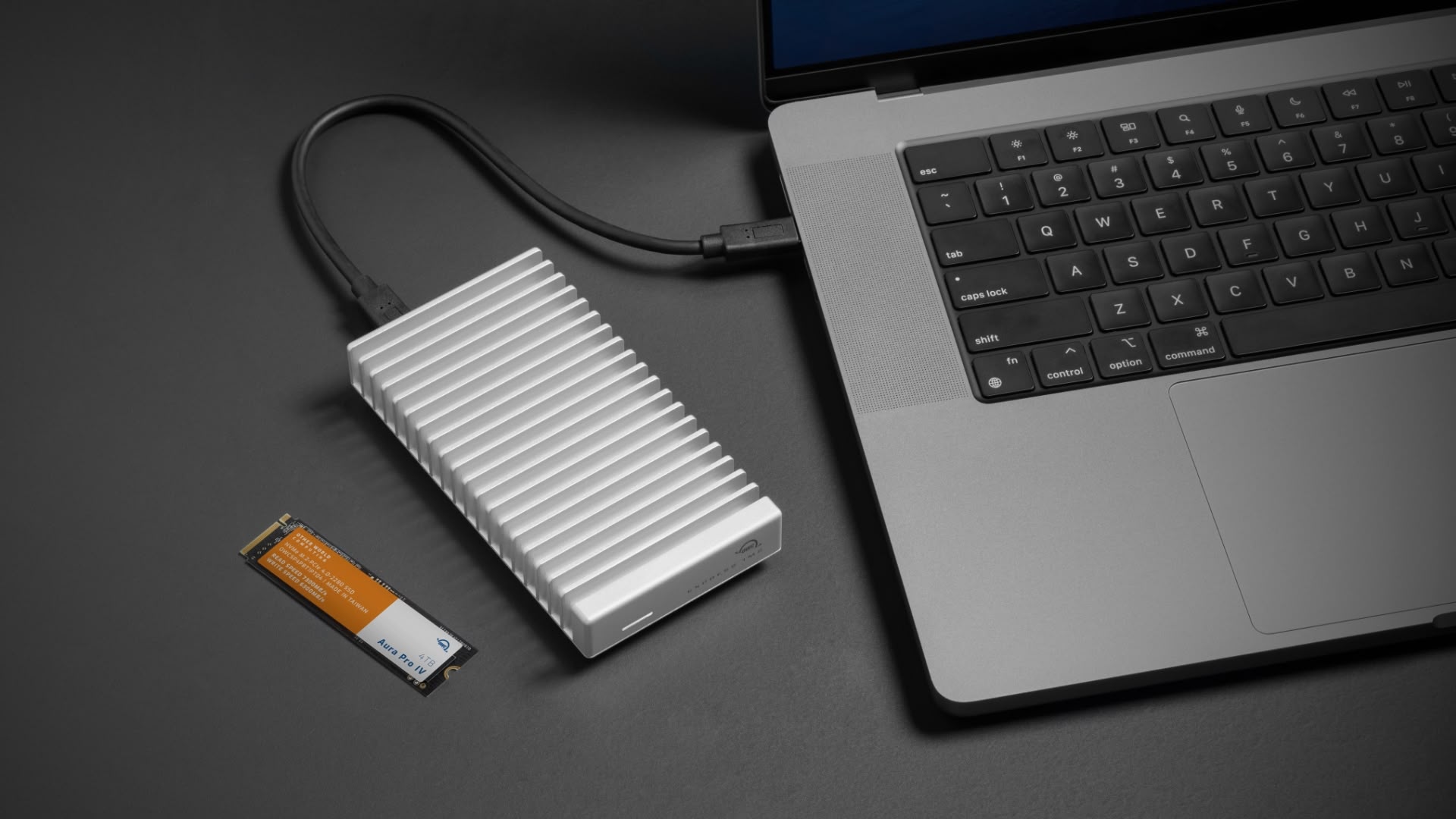
OWC has unveiled its new Express 1M2 80G portable SSD, bringing another fast Thunderbolt 5 external storage option to Mac users with the latest hardware.

Providing over 6,000 MB/s real-world speeds, the 1M2 approaches the performance level of an internal MacBook Pro drive, making it a compelling partner for Apple's latest M4 Pro and M4 Max MacBook Pro models, not to mention the M4 Pro Mac mini and the latest Mac Studio.
The aluminum enclosure features a finned heatsink design that means no fans are required to maintain performance. Bus-powered through its included USB4 cable, the drive also works across multiple platforms including PCs, iPad Pro, Chromebooks, and Surface devices.
OWC offers both DIY and ready-to-run configurations. Users can purchase the empty enclosure and install their own NVMe M.2 SSD, or select pre-built models. The design supports both 2280 and 2242 form factor drives, so future upgrades should be straightforward.
The Express 1M2 80G maintains backward compatibility with Thunderbolt 3 and 4 systems, and starts at $219 for the empty enclosure, with pre-configured models ranging from $349 for 1TB to $1,299 for 8TB. The drive is available to purchase now through the OWC website and Amazon.
Note: MacRumors is an affiliate partner with Amazon. When you click a link and make a purchase, we may receive a small payment, which helps us keep the site running.
Article Link: OWC's New 1M2 80G Portable SSD Brings 6,000MB/s Speeds to Thunderbolt 5 Macs
As an Amazon Associate, MacRumors earns a commission from qualifying purchases made through links in this post.

